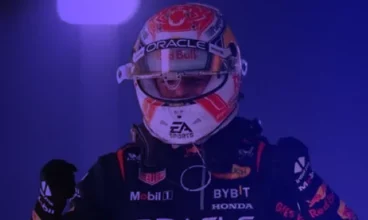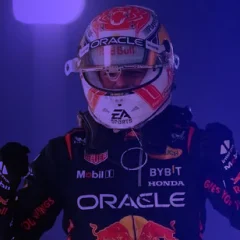Longshots vs. Favorites | Longshots and Favorites Explained
Longshots may be most associated with horse racing, but bookmakers and bettors are getting more exposed with the term at any sport to tag two respective teams or players in a certain game. Conservative bettors are likely to stake their money on the favorites despite a smaller profit (depending on how big are you betting) that carries low risks.
Longshots may be most associated with horse racing, but bookmakers and bettors are getting more exposed with the term at any sport to tag two respective teams or players in a certain game. Conservative bettors are likely to stake their money on the favorites despite a smaller profit (depending on how big you are betting) that carries low risks. But bettors who calculate their risks or take a bold hunch defy logic and pick on the underdogs.
Bookmakers provide bettors with betting odds to serve as a guide or a basis on picking the bed., But deciding your bet solely based on betting odds may not be advisable, as bookmakers apply a certain margin to betting odds to ensure guaranteed profits on their end.. Bettors who place their money on longshots should gauge their decision based not only on odds, but on several aspects before weighing their options and making that call.
HOW LONGSHOTS ARE CLASSIFIED FROM THE FAVORITES
A longshot is simply defined in sports betting as the underdog, the side with the odds stacked against them, the one team or individual who is not expected to win in a match. A favorite is self-explanatory; the wise bet to win it all if it was the last game of the World Series in Major League Baseball, the no-tomorrow Super Bowl in the National Football League, or in Game 7 of the NBA Finals.Bookmakers do not just tag favorites and longshots by their whim, sentiments or biases. Even if the two teams are almost evenly matched based on lineups, winning records and statistics/past performances, there should be a favorite and the longshot. In such cases, the odds between each team can be close, prompting bookmakers to add margins to the odds very closely depending on how many bettors favor one team as the game approaches.Like rabid fans (or number geeky fans for that matter), picking the favorite from the longshot can be based on statistics, recent win-loss records of the teams, the, addition or subtraction of key players close to the match and momentum swings favoring one team or player against the other in some instances.
GETTING PAST THE FAVORITE-LONGSHOT BIAS
After poring over data ranging from team and individual statistics, win-loss records, player availability and checking out the intangibles from both teams and weighing it with the odds and margins offered by most bookmakers, bettors then get to decide where to place their money. But long-time bettors noticed the so-called favorite-longshot bias among many bookmakers. So how does this work? Or not?For the uninitiated, shortening the odds by bookmakers relative to expectations associated with each outcome of a match is the way to determine the favorite-longshot bias. For example, the odds of Roger Federer winning are listed as “a” while the odds for Novak Djokovic to win are “b,” the margin will be determined by : [(1/a) + (1/b)] x 100%.A strong favorite-longshot bias was spotted at the 1992 UK flat racing season, where only seven percent of losses was experienced by bettors among runners priced shorter than even money (2.00) from among a sample of 4,689 runners in 481 races. Bettors who placed their money on longshots at over 40/1 odds lost over 40%.Stronger biases are determined once bookmakers place larger margins,with the underdogs getting the extra margin. An example would be the 2018-2019 NBA season, when the Toronto Raptors took on the Golden State Warriors in the finals. One of the bookmakers priced the two teams at 1.07 and 14.00, respectively, while another bookmaker – with a much higher margin- priced them at 1.06 and 9.00. This showed that the major difference between the two bookmakers was determined on the longshot.
LONGSHOTS PROVIDE THE BIGGEST PAYDAYS
Like it or not, betting on a team whose odds range from 200/1 to even 500/1 and somehow defies logic to topple the highly-favored team in any sport spells nothing less than a fairy-tale moment in sporting history, much more at sports betting websites as a select few laughing their way to the bank after collecting their winnings.Betting on longshots may not just be confined to smart bettors who see something even bookmakers do not. Fan loyalty may also play a factor here, but it comes as a great risk. Imagine supporters of Allen Iverson and the Philadelphia 76ers placing all their money on their favorite player and team despite taking on Shaquille O’Neal, Kobe Bryant and the Los Angeles Lakers in the 2000-2001 NBA Finals, ignoring the major odds stacked against them,and winning it all.From team or player loyalty to gut feel to a hunch and the intangibles into play as well as going against the majority, the glitter of betting on longshots and winning big will always be at the back of every seasoned (and even a newcomer) bettor.. But better money management skills and a deep bankroll should come in handy for those going the longshots route to stay afloat in sports betting.
LONGSHOT BETS GONE WRONG
As previously mentioned, betting on longshot comes with very high risks, and the stakes could be even more dangerous if a large amount of money is placed on the underdogs. But making calculated risks gone wrong should be an eye-opener for bettors to approach each match depending on each sport.Team sports can be a safe haven for new bettors, as they only have to choose between two sides. But how about in horse racing where there are multiple entries in each race? Bettors should study carefully the odds and each horse and jockey lined up at the starting gate before making that call to bet. The success probability of longshots is difficult to be estimated by bettors in horse racing, as several factors may come into play, like a slow start, the horse suddenly fading at the homestretch.or the jockey making the wrong turn in the last 400 meters. Some bettors only bet on longshots as they “need” a big win to recover their previous losses. That is a dangerous option, as the chance for a big payday may not come at all long after all the races for the day are over.Sentiment or superstition is not advisable in horse sports betting, as these likely result in losses. For example, a bettor placed his money on a longshot like Flash Jockey just because he was impressed with the horse’s name. Such a decision is a recipe for disaster.
STRIKING A BALANCE
After bookmakers announce “all bets are off,” it is important for bettors to stick to their choice and live with the results, particularly when losing. Just in any competition, players should learn from losing, no matter how painful it may be. In sports betting, bettors should learn to accept losing huge amounts of money if they stick to picking the longshots often over the favorites.
For sports featuring multiple entries in every match, it helps that bettors are well-versed with each entry, their past records and compare the odds among different bookmakers. Take calculated risks like starting with a small amount of money before making big bets on longshots.Sure, getting your money tripled or quadrupled from your original betting amount is too tempting to pass up. But make longshot bets on sports bettors should fully understand, Best of luck and happy hunting (for that big payout).
Latest news

FanAdvice – your Private Sports Betting Club
Welcome to FanAdvice, where sports enthusiasm meets strategic insight, creating the ultimate Private Sports Betting Club experience. Are you ready…

Predictions on the big fights coming up UFC: UFC 299
Gear up for an adrenaline-fueled spectacle as UFC 299 promises to deliver a night of unforgettable clashes. The octagon is…

Football betting tips and predictions on top European leagues
If you're into football betting and want the edge in your predictions, look no further. This article breaks down the…

Bahrain Grand Prix 2024: Predictions and odds
Get ready for the adrenaline-pumping return of Formula 1! The Bahrain Grand Prix 2024 kicks off the record-breaking 24-race season,…








